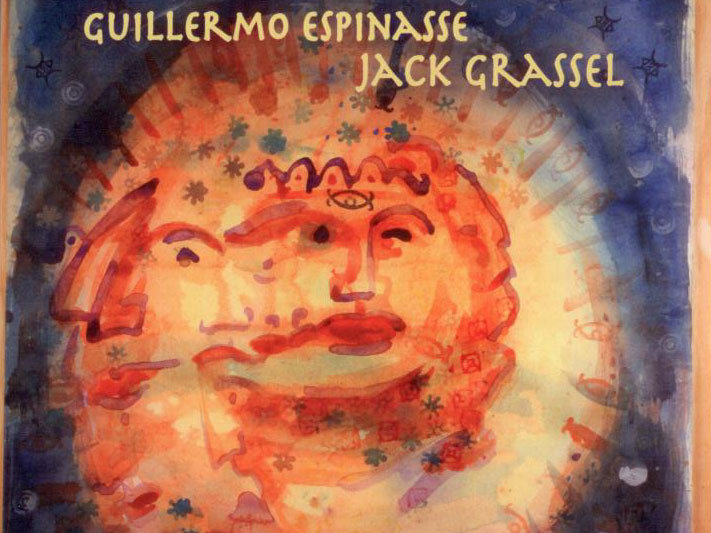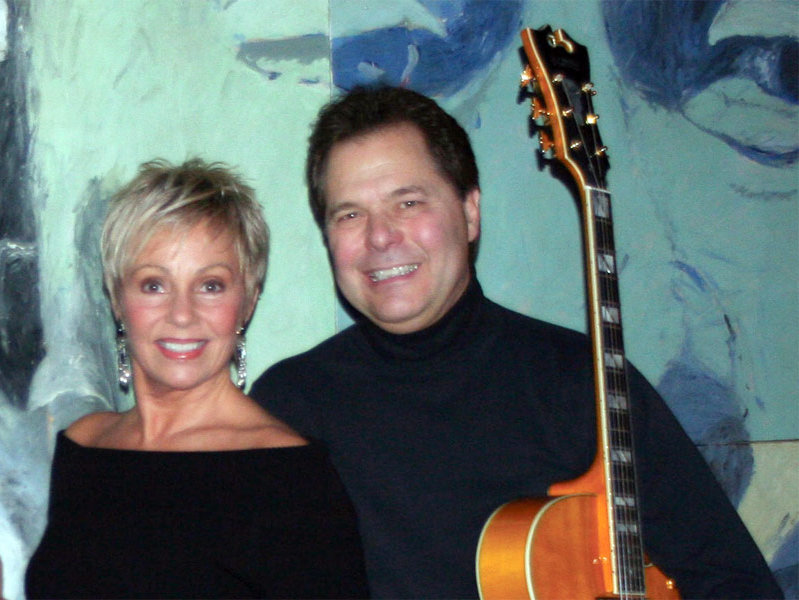"In 2001, I and my wife, vocalist Jill Jensen, enjoyed a trip to the small island of Isla Mujeres during our honeymoon," writes Milwaukee jazz guitarist Jack Grassel in the liner notes of his new CD, "El Refugio."
"We fell in love with Isla and returned the next year."
It was on that second trip that Grassel encountered Argentine guitarist Guillermo Espinasse, who lives on the island.
"Despite a language barrier, our eyes met with that knowing look of musicians recognizing each other as kindred souls."
Grassel sat in. The two continued to play the following day at Espinasse's house and it continued -- on and off -- for the next eight years.
Now the duo releases its first recorded collaboration, with seven performances of mostly familiar tunes, likes "Autumn Leaves" and the appropriate, "Just Friends," which closes out the disc. Kicking it off? A version of "Tequila."
Because the two guitarists share a similar approach to the instrument, the result is an earthy, organic set of jazz guitar that feels so loose and friendly that the listener is transported to the Mexico studio where it was recorded. That listener might also have trouble believing it was recorded in just a few hours.
As the CD is released, we asked Grassel about meeting Espinasse, making the record and what the future might hold for the long-distance duo.
OnMilwaukee.com: The story about how you met Guillermo is a great one. Has that kind of thing ever happened to you before? You know, just kind of running into a sort of musical soul mate?
Jack Grassel: I meet a lot of musicians often as I travel around the world. There are great "unknown" musicians everywhere. I always seek them out. When going into a new city, I ask, "who are the great musicians who live here?" Most times, the unknown ones are playing more profound and unique music than famous artists.
OMC: What do you think made the connection so strong that it grew into such a long, rewarding friendship?
JG: I seldom run into a guitarist who is able to play "complete music" all by himself. It's difficult to be a solo guitarist and play meaningful music.
A special music can be made when just two musicians play together. It's the same as having a meaningful conversation with two people vs. a room full of folks all talking at the same time.
OMC: Do you similar approaches of playing bass lines and chords at thesame time naturally complement one another or is there the risk of stepping on each other's toes?
JG: To play jazz music, it's important to have a walking or latin bass line to make the music move forward in addition to the chordal harmony. Jazz music doesn't swing without that. Just strumming a guitar without a bass player doesn't work. The technique of chords and bass simultaneously by a guitarist creates jazz movement and harmony while retaining the quality
duo conversation of two guitarists.
OMC: Tell me about the nuts and bolts of making the record. Had you decided on the material in advance?
JG: Guillermo and I had been rehearsing, playing gigs and concerts for seven years before we decided to record. I had been visiting him in Isla Mujeres for 2-3 weeks at a time in winter. It was challenging to record. We had to book a studio in Cancun. That was difficult since phones seldom work, people don't return phone calls and there aren't answering machines.
To get there from Isla Mujeres required hitch hiking, a ferry ride, procuring a taxi, and then arriving to find that the mayor had booked the studio at the same time to record a speech. No one called us because most phones in Mexico don't work. The people at the studio didn't speak English. I had to use Guillermo as an interpreter. We waited two hours in the lobby for studio time. Then when we started to play, we were informed that in just three hours, a famous salsa band was coming in to record, so we had to be finished at that time. Since I had gigs the next day in Milwaukee, I couldn't stay another day.
OMC: So it was recorded quickly.
JG: We had to record an album in thee hours! That's the way many of the classic jazz albums were recorded, with all first takes. That required us to get down to the gut feeling and play accurately, immediately, and maintain it for three hours. That's why the music is so intense. I mixed it in Milwaukee. The Mexican studio put the tracks on the CD in such a way that it required months at a studio in Milwaukee to unscramble it. But it turned out great thanks to Kirk Tatnall's mixing brilliance.
OMC: Does he ever come up here to perform with you?
JG: Guillermo won't ever come to the U.S. He's from Argentina living in Mexico and there are all kinds of immigration laws that make it almost impossible to come here.
OMC: Do you hope this disc the first of many with him or was it more of a one-off sort of thing?
JG: I think this disc may be the only one I make with him. I will consider going through all that trouble again to make another one, depending on the reception this one gets.
OMC: What else are you working on these days? I know you're a busy guy.
JG: I'm busy practicing the guitar every day to improve my playing. Jill Jensen and I will record a CD in October at the Carleton Grange documenting our duo, in it's third year of every Sunday there. It will be out in April. I haven't taught in five years, to devote more time to gigging and practicing.




